- Home
- Prelims
- Mains
- Current Affairs
- Study Materials
- Test Series
Feb 02, 2022
POLICY NORMALISATION: RBI MAY UP REVERSE REPO RATE BY 25 BPS
 Repo Rate and Reverse Repo Rate?
Repo Rate and Reverse Repo Rate?
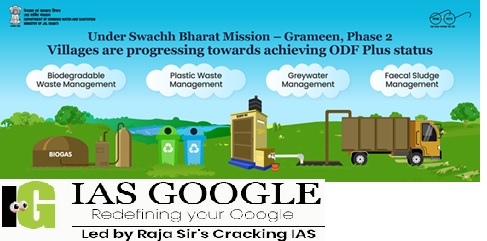 PWM system in Sasewadi village:
PWM system in Sasewadi village:
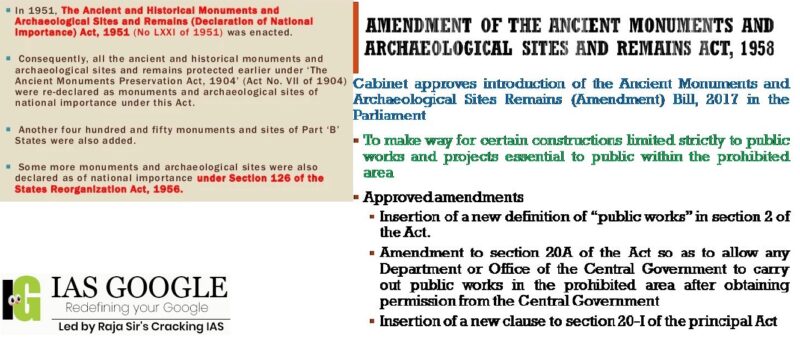
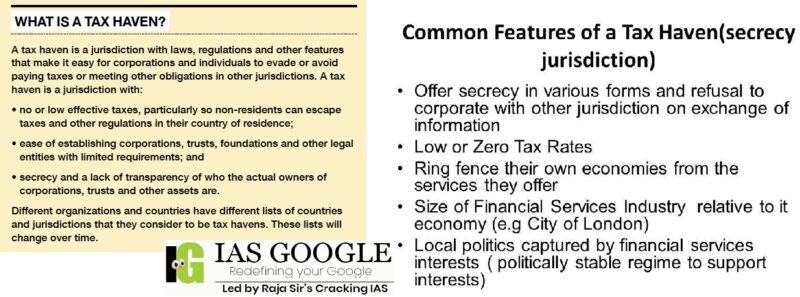
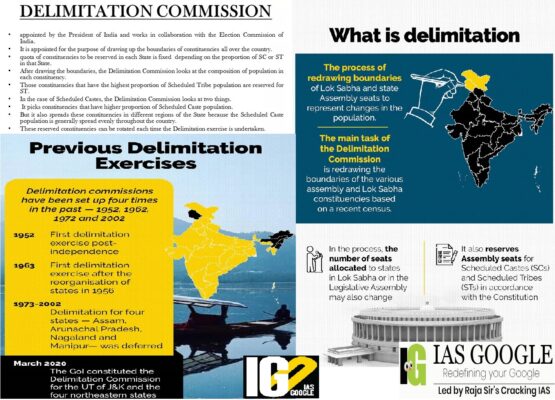 Delimitation:
Delimitation:
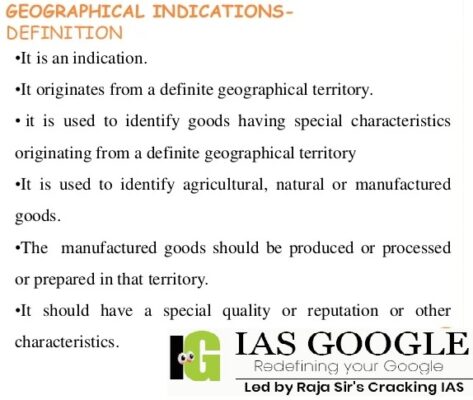
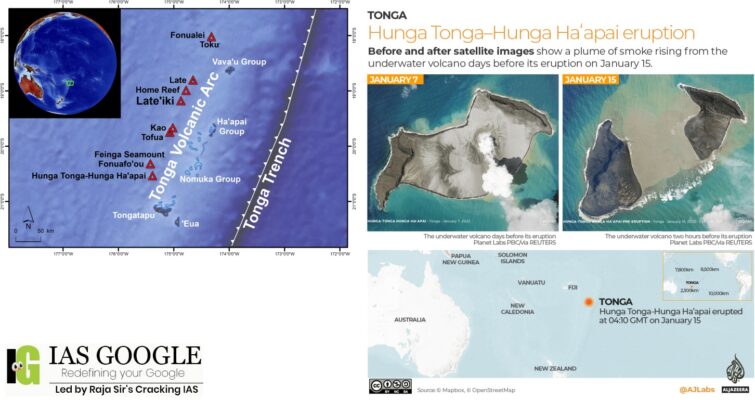
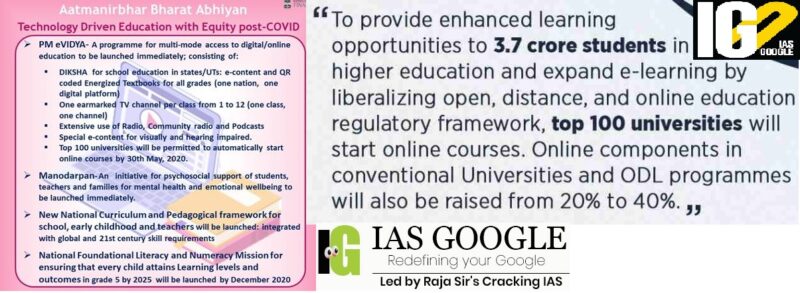
- The Reserve Bank of India (RBI) is expected to start on a gradual normalisation of the reverse repo rate, hiking it by about 25 basis points in the upcoming Monetary Policy Review.
 Repo Rate and Reverse Repo Rate?
Repo Rate and Reverse Repo Rate?
- The repo rate or repurchase rate or the policy rate is the rate at which RBI lends money to the banks, when banks face shortage of funds.
- These are short term, usually overnight borrowings.
- This is done using government securities. RBI buys government bonds from banks and agrees to sell them bank to banks at a fixed rate.
- Whereas, the reverse repo rate is the rate at which RBI borrows funds from other banks for the short term.
- Here, RBI sells government bonds to banks with a promise to buy back the bonds from the banks in future.
- When banks have excess funds with them, reverse repo allows banks to deposit these funds with RBI and earn interest on them at the same time.
- The Reverse Repo Rate is decided by the Monetary Policy Committee (MPC), headed by the RBI Governor. The decision is taken in the bi-monthly meeting of the Committee.
- An increase in the reverse repo rate provides an incentive to the banks to park their surplus funds with the central banks on a short-term basis, thereby reducing liquidity in the banking system and overall economy.
- It can lead to lower interest rate on loans for the bank’s customers, the decision will depend on multiple factors including the bank’s internal liquidity situation and the availability of other potentially less risky and equally lucrative investment opportunities.
- The bank will give more loans to RBI to gain profit. It causes home-loans to become dearer.
- Liquidity will be squeezed out from the market hence inflation will likely come down.
- During the reduction of reverse repo rate banks earn less on their excess money deposited with RBI. This leads the banks to invest more money in more lucrative avenues such as money markets, which increases the overall liquidity available in the economy.
- RBI cuts the rate to inject liquidity into the economy.
- Monetary policy refers to the policy of the central bank with regard to the use of monetary instruments under its control to achieve the goals specified in the RBI Act 1934.
- The primary objective of monetary policy is to maintain price stability while keeping in mind the objective of growth. Price stability is a necessary precondition to sustainable growth.
- The committee comprises six members (including the chairman)-
- Three officials of RBI
- Three external members nominated by Government of India.
- It determines the policy interest rate (repo rate) required to achieve the inflation targets of 4%.
- Sasewadi Gram Panchayat in Bhor Block of Pune district in Maharashtra has set a healthy precedent towards eliminating plastic waste and achieving visual cleanliness through an innovative and low-cost, cluster level system for plastic waste management (PWM).
 PWM system in Sasewadi village:
PWM system in Sasewadi village:
- Sasewadi village was the first to have a system in place for collection, segregation and transportation of waste, while making maximum utilisation of available resources.
- To begin with, they converted their proposed vermi-composting unit into a resource recovery centre, in which they provided a small space for storage of the plastic waste that was collected.
- Thereafter, they hired a sanitation worker to collect and segregate waste and another worker for transportation of plastic waste to the company at a nominal charge.
- Initially, the people would not segregate waste properly. However, after consistent interpersonal communication, almost all of households took their role seriously and were linked to the system.
- It accepts all kinds of plastic waste for processing, and the bi-products (carbon chunks, gas emissions, and oil + gas) that it generates are not harmful to the environment. In fact, the gas generated along with the oil are used to power the equipment at the plant.
- Further, the emissions are well below the prescribed limit of the Maharashtra Pollution Control Board.
- To accelerate the efforts to achieve universal sanitation coverage and to put the focus on sanitation, the Prime Minister of India had launched the Swachh Bharat Mission on 2nd October 2014.
- Under the mission, all villages, Gram Panchayats, Districts, States and Union Territories in India declared themselves "open-defecation free" (ODF) by 2 October 2019, the 150th birth anniversary of Mahatma Gandhi, by constructing over 100 million toilets in rural India.
- To ensure that the open defecation free behaviours are sustained, no one is left behind, and that solid and liquid waste management facilities are accessible, the Mission is moving towards the next Phase II of SBMG i.e ODF-Plus.
- ODF Plus activities under Phase II of Swachh Bharat Mission (Grameen) will reinforce ODF behaviours and focus on providing interventions for the safe management of solid and liquid waste in villages.

- The 100-metre prohibited area for construction activity around Centrally-protected monuments could be replaced with site-specific limits to be decided by an expert committee.
- The Ancient Monuments and Archaeological Sites and Remains (AMASR) Act, 1958, was amended in 2010 to declare the 100-metre radius of protected monuments as prohibited areas and the next 300-metre radius as regulated areas.
- The proposed amendment would change Section 20A of the Act, which refers to the prohibited area, to rationalise the prohibited and regulated areas.
- Expert monument committees would decide the prohibited area around a particular monument, which could be as wide as 500 metres for some sites like the Taj Mahal.
- The amendment would also enable the ASI to act against encroachment by holding the relevant authorities liable in case of illegal buildings at a protected site.

- The legal, insolvency and banking experts have said that Tax havens could come in the way of cross-border insolvency laws.
- Videocon India had set up special purpose vehicles (SPVs) in the tax havens and owns shares in those SPVs.
- The SPVs in turn hold shares in the companies that own those assets in Brazil and Indonesia.
- This complex web makes it difficult to pinpoint the exact place of business of the company and creates legal challenges.
- The Firestar International have international assets held through overseas firms located in places such as Delaware, a tax haven in the United States.
- A tax haven is an offshore country that allows wealthy individuals and business owners to bank with the country’s local institutions in order to avoid paying home country taxes on gains or profits.
- These tax haven countries offer the benefit of little to no tax liability, and company owners or consumers with considerable wealth do not usually need to be citizens to take advantage of this kind of tax loophole.
- As a result of this tax haven structure, business owners and wealthy consumers pay little or even no taxes on their profits or personal finances.
- In other words, tax havens offer a way for companies and affluent individuals to avoid higher corporate tax rates or income tax in their home countries.
- The tax haven is being used to shift profits, and therefore enables businesses to avoid having to pay considerable amounts in income tax and corporate tax rates on their profits and personal wealth.
- Using corporate tax havens creates an imbalance of tax liability, with smaller companies and middle-class consumers having to make up the share of the burden from enterprises that use tax havens.
- When multinationals use corporate tax havens to escape paying their contributions to these public goods and services, they are free-riding off the taxes paid by other people.
- A shell company is a legal entity created in a tax haven.
- Shell companies typically exist only on paper, with no full-time employees, and no office.
- Shell companies can hold money, luxury homes, intellectual property, businesses and other assets.
 Delimitation:
Delimitation:
- The Election Commission of India describes it as the “act or process of fixing limits or boundaries of territorial constituencies in a country or a province (state or Union Territory) having a legislative body.”
- The process may also entail a change in the number of Lok Sabha seats allotted to different states, as well as in the number of Legislative Assembly seats for each state.
- In March 2020, the government of India set up a Delimitation Commission, headed by retired Supreme Court judge Ranjana Prakash Desai, to complete the delimitation exercise within a year and later the deadline was extended till March 2022.
- The Delimitation Commission has changed the maps of all 90 assembly constituencies across the UT and renamed 28 new constituencies besides reconfiguring or deleting 19 existing constituencies from the list of the last delimitation conducted in 1995.
- The commission has reserved nine seats for STs —six in Jammu division and three in Kashmir Division and seven for SCs in the Jammu division.
- The commission shared its first draft with associate members in the meeting held on December 20.
- It proposed six additional assembly constituencies in Jammu division and one in Kashmir.
- This tally took the total number of seats in Kashmir to 47 and in Jammu to 43.
- The commission also proposed nine seats for Scheduled Tribes (STs) and seven seats for Scheduled Castes (SCs).
- The regional parties, including NC and the People’s Alliance for Gupkar Declaration, rejected the draft and decided to protest as well, which the J&K administration didn't allow.
- In Jammu division, six new assembly seats have been created in Kathua, Samba, Rajouri, Doda, Udhampur and Kishtwar districts.
- The commission has also named one constituency as Shri Mata Vaishno Devi. It comprises areas of Katra and parts of Reasi.
- The boundaries of two parliamentary constituencies in Jammu – Jammu-Poonch and Udhampur Doda – have been redrawn.
- The entire Poonch district and parts of Rajouri, which falls in Jammu division, have been added to Anantnag parliamentary constituency, which otherwise fell entirely in Kashmir division.
- In Kashmir division, one assembly constituency, Trehgam, has been created in the frontier district of Kupwara.
- Besides, some assembly constituencies have been deleted like Amira Kadal and Habba Kadal in Srinagar district while nomenclature of the constituencies has been changed as well.
- The Lok Sabha seats in Kashmir will now be Anantnag-Rajouri in southern side and in central Kashmir, Srinagar Lok Sabha constituency will now include five districts instead of earlier three districts.
- The Lok Sabha constituency in northern Kashmir will include some parts of central Kashmir as well.

- A GI tag is a sign used on products that have a specific geographical origin and possess qualities or a reputation by virtue of their geographical association.
- Three applications from Uttar Pradesh have been filed with the Geographical Indications Registry.
- The application is seeking a Geographical Indication (GI) tag for the Bundelkhand Kathiya Gehu (Wheat), Banarasi Tabla and Sitapur Durrie.
- Bundelkhand Kathiya Gehu has high nutritional value and a high fibre content. It is usually sown in the last week of October or first week of November and is harvested between March and April.
- A durrie is a thick flat woven rug/carpet traditionally used as floor coverings. Though durries are made in various parts of India, the applicants have indicated that the Sitapur Durrie is unique and is different from a carpet.
- These durries are made of cotton, wool, jute and silk b weavers who work in cottage industries, kharkhanas or privately run factories spread across villages in Sitapur town, Biswan, Laharpur among others.
- Tabla is one of the most important musical instruments in Banaras and it is made of different kinds of wood like sheesham, neem, mahogany and babla wood. There is a huge demand for these tabla’s in the local market as well as the international markets.

- The explosion might help the scientists to reveal results of water-lava interactions on the red planet and elsewhere across the Solar System.
- Hunga Tonga-Hunga Ha’apai was formed from ash and lava expelled from an undersea volcano in early 2015 and is similar to structures on Mars and possibly also Venus.
- The scientists used satellite observations and seafloor surveys to study how such islands form, erode and persist.
- The researchers wanted to use that knowledge to understand how small conical volcanoes found on Mars may have formed in the presence of water billions of years ago.

- Budget 2022 is aiming to expand the ‘One class, one TV channel’ programme of PM eVIDYA from12 to 200 TV channels.
- The proposal will enable all states to provide supplementary education in regional languages for classes I to XII.
- The move will help the marginalised sections, especially those from the rural areas, who do not have good internet connectivity.
- The uniqueness of the PM e-Vidya lies with its comprehensive accessibility for all as it caters the education content to all with its multi-mode set-up of remote learning platforms including internet, radio, community radio, podcast, and TV.
- These channels telecast curriculum based educational contents developed by NCERT and other agencies such as CBSE, KVS, NIOS, Rotary, etc.
- The teachers and students can access the digital infrastructure after scanning the QR code which are provided on the books.
- After scanning the code you will come up with suggestions and topics that you want to study.
- The portal can be accessed in various Indian languages and English.
- You can access portal in around 18 languages.
- Language can be chosen depending upon the comfort and convenience.
- The portal will also provide you suggestions regarding the courses as per your skill set.
- Diksha portal requires a user to choose the class whose study material has to be accessed.
- You have to click on the standard whose study material you want to access and you have to enter on submit button.
- The main objective of the PM eVIDYA program is to provide quality education to all the students of the country.
- The students of the country are not required to be physically present in order to get an education as they will get an education from the comfort of their home.
- Recently, the National Health Authority (NHA) has initiated a consultation process on the retention of health data by health-care providers in India.
- A simple classification system exposes individuals to harms arising from over-collection and retention of unnecessary data.
- One-size-fits-all system can also lead to under-retention of data that is genuinely required for research or public policy needs.
- Currently, service providers can compete on how they handle the data of individuals or health records.
- The Supreme Court of India has clarified that privacy is a fundamental right, and any interference into the right must pass a four-part test: legality; legitimate aim; proportionality, and appropriate safeguards.
- The mandatory retention of health data is one such form of interference with the right to privacy.
- The consultation paper asks whether the health data retention policy should be made applicable only to health-care providers who are participating in the ABDM ecosystem, or to all health-care providers in general.
- The aim of data retention is described in terms of benefits to the individual and the public at large.
- Individuals benefit through greater convenience and choice, created through portability of health records.
- The broader public benefits through research and innovation, driven by the availability of more and better data to analyse.
- Globally, legal systems consider health data particularly sensitive, and recognise that improper disclosure of this data can expose a person to a range of significant harms.
- The privacy risks should make us very hesitant about retaining an individual’s entire health or medical record on the grounds that they might be useful for research someday.
- As per Indian law, if an individual’s rights are to be curtailed due to anticipated benefits, such benefits cannot be potential or speculatory: they must be clearly defined and identifiable.
- In a world of big data, the research community is still to arrive at consensus on what constitutes adequate anonymisation, or what might be considered best practices or methods for achieving it.
- Ultimately, the test for retaining data should be that a clear and specific case has been identified for such retention, following a rigorous process run by suitable authorities.
- A second safeguard would be to anonymise data that is being retained for research purposes — again, unless a specific case is made for keeping personally identifiable information. If neither of these is true, the data should be deleted.
- An alternate basis for retaining data can be the express and informed consent of the individual in question.
- The health-care service providers and everyone else will have to comply with the data protection law, once it is adopted by Parliament.
- Recently, a video, purportedly showing villagers from Surguja district of Chhattisgarh taking an oath to implement an economic boycott of Muslims.
- The Vishva Hindu Parishad (VHP) is known to distribute pamphlets calling for the economic boycott of those it labels “anti-national, anti-Hindu, love jihadists” — all convenient epithets to convey a communal message.
- These acts are not merely ‘expressions of hate’; they can be characterised as the emergence of a new form of untouchability guided by the political imperatives of Hindutva rather than the religious dictates of Hinduism.
- A progressive re-articulation of the concept of untouchability or a re-reading of the anti-discrimination legislation is required to end this abomination.
- The hierarchical caste-based Hindu social order was governed by the ideology of purity and pollution.
- Untouchability was a mechanism through which power was exercised over the Dalits and the hierarchy reinforced.
- One of the most common forms of untouchability was the imposition of social and economic boycott of Dalits if they dared to transgress social norms or exercise their rights.
- Collective discrimination, marginalisation and disempowerment was justified as the right of the individual to choose freely in a marketplace.
- During the freedom struggle, the struggle to eradicate untouchability gained momentum.
- This struggle found its highest expression in the fundamental rights enshrined in the Constitution under Articles 14, 15 and 17.
- Even during the Constituent Assembly debates, it was argued that the scope of untouchability should be restricted to practices related to religion and caste.
- There is a consensus that only those acts which are motivated by the ideology of purity and pollution are considered within the ambit of untouchability.
- In India, mere provision of rights has proved to be insufficient to prevent marginalisation owing to the practice of untouchability and hence, the legislature and the judiciary have had to make and interpret special laws to that effect.
- Two laws which explicitly make social and economic boycotts punishable are The Scheduled Castes and the Scheduled Tribes (Prevention of Atrocities) Act, 1989, and Maharashtra Protection of People from Social Boycott (Prevention, Prohibition and Redressal) Act, 2016.
- The tethering of anti-boycott or untouchability laws to the tenets of purity and pollution and restricting their scope to caste-centric boycotts makes them ineffective to counter the calls of economic boycott of Muslims.
- The act of collectively resolving to boycott Muslims reinforces their ‘othering’ and re-emphasises the VHP’s idea of ‘Hinduness’; reconstituting Hinduism, based on caste hierarchy, into a unified, ethnic whole, where the figure of the Dalit is replaced by the Muslim as the significant ‘other’.
- These grave new developments need to be taken into cognisance and an urgent politico-legal response to such public calls for Muslim economic boycott is required as they militate against the principle of fraternity enshrined in the Constitution.
- This can be done by a progressive redefinition of untouchability or by expanding the scope of the anti-boycott laws to include discrimination against religious communities.









 Latest News
Latest News
 General Studies
General Studies